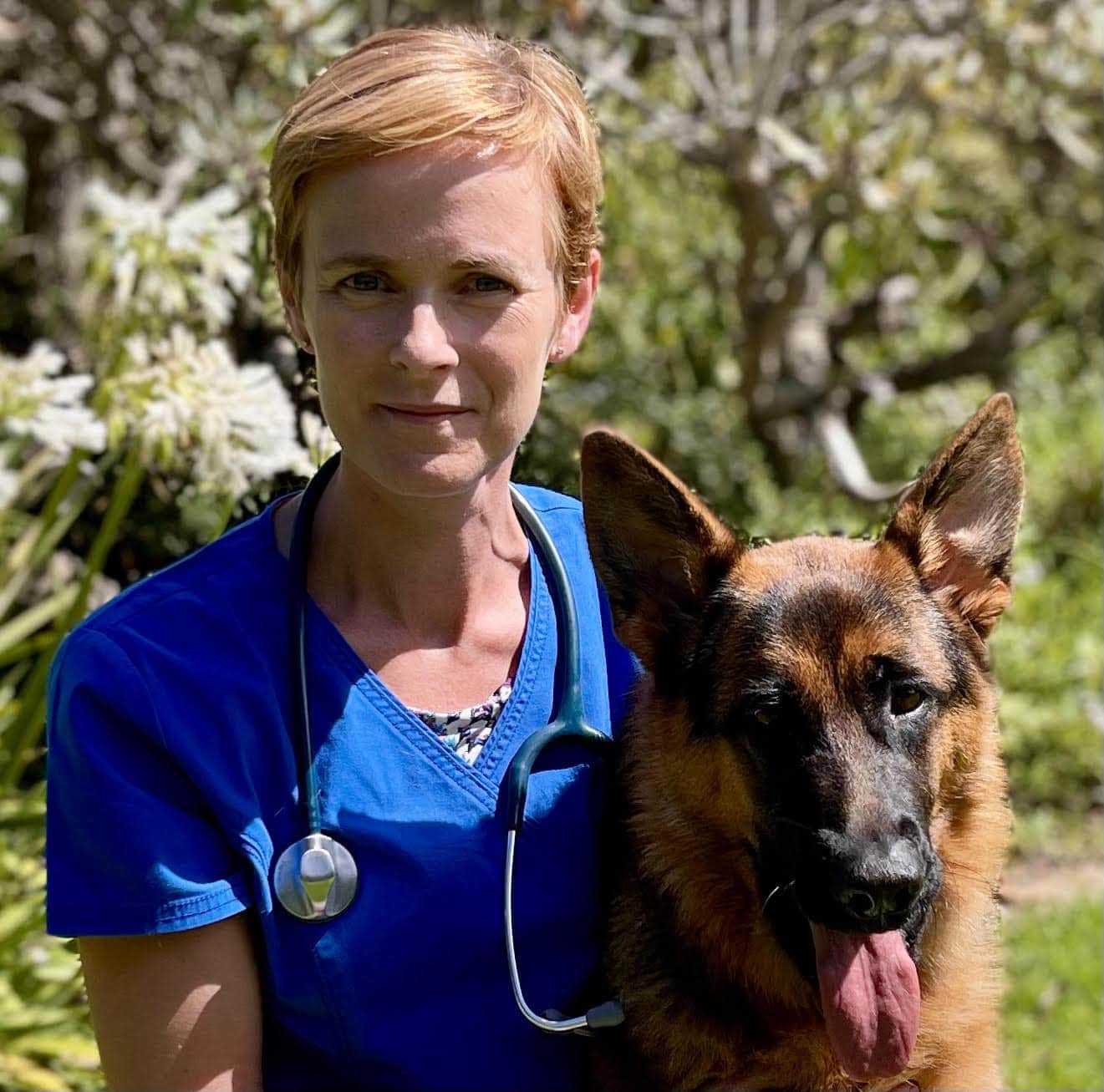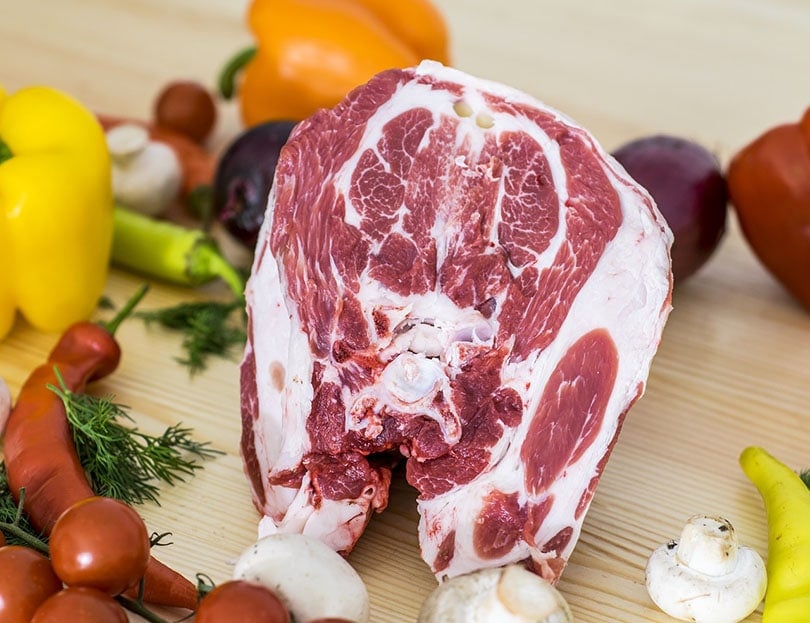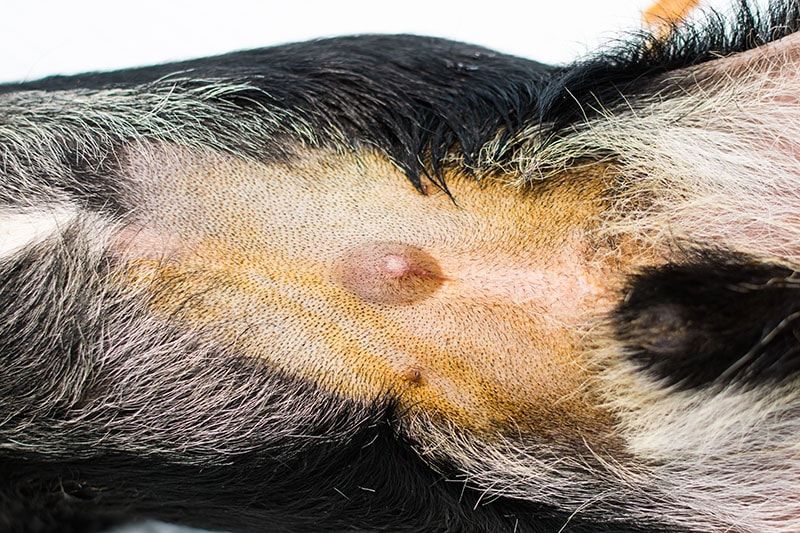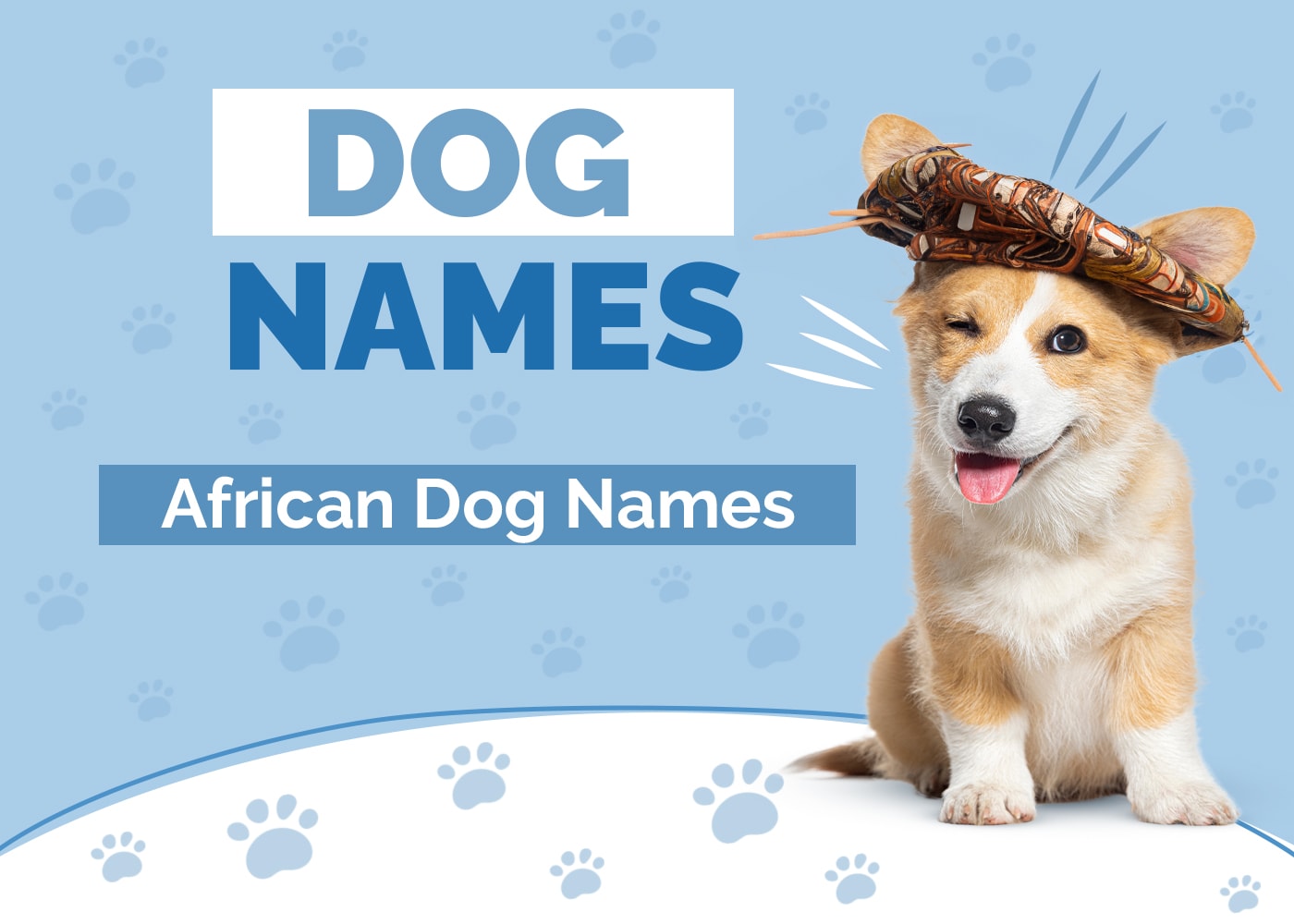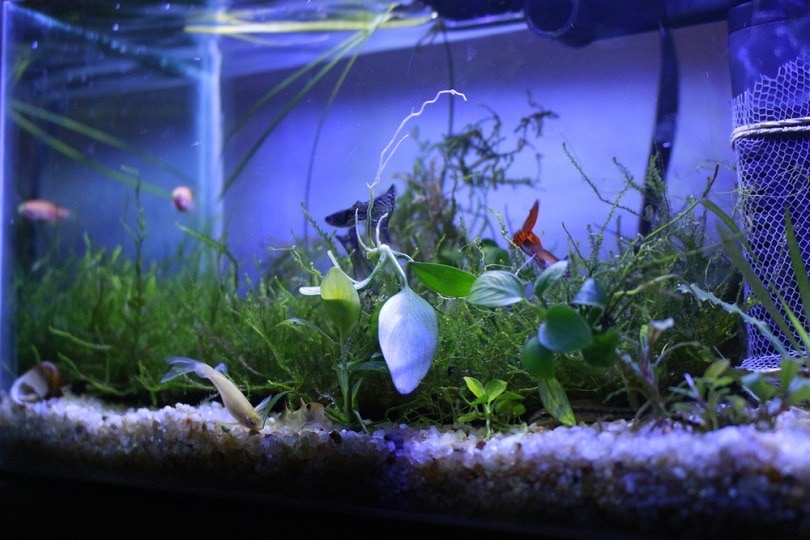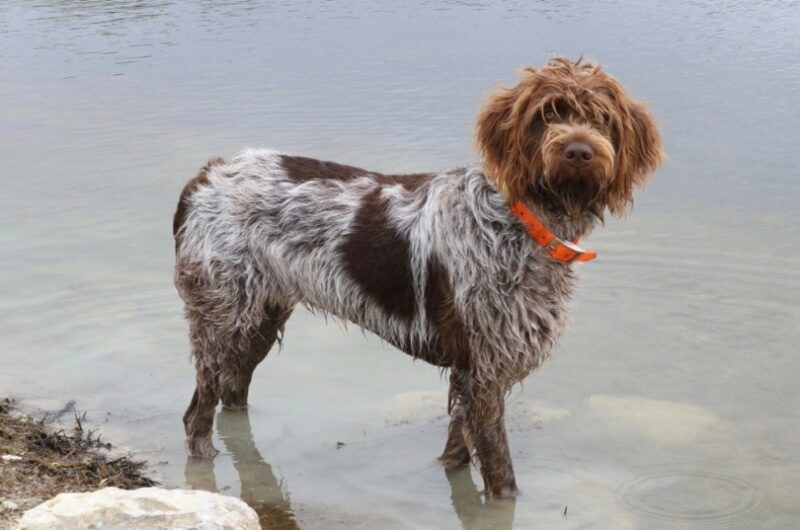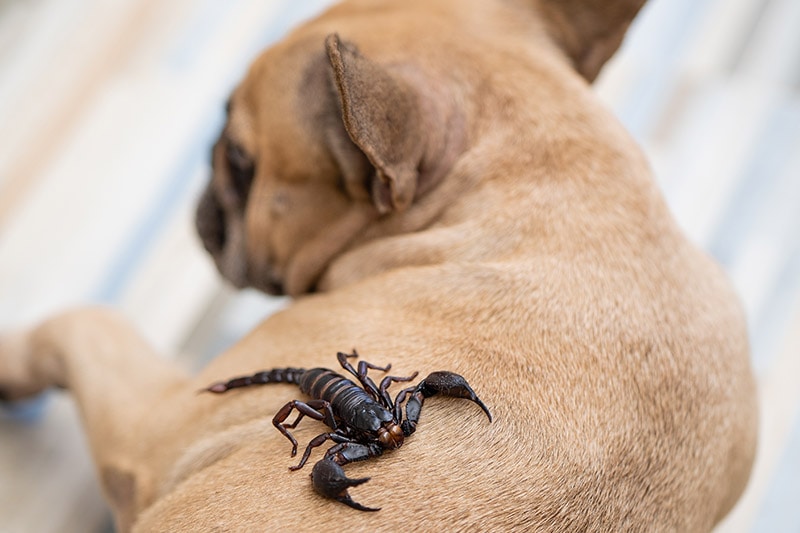Is Food Coloring Safe for Dogs? Vet Approved Safety Facts

Updated on
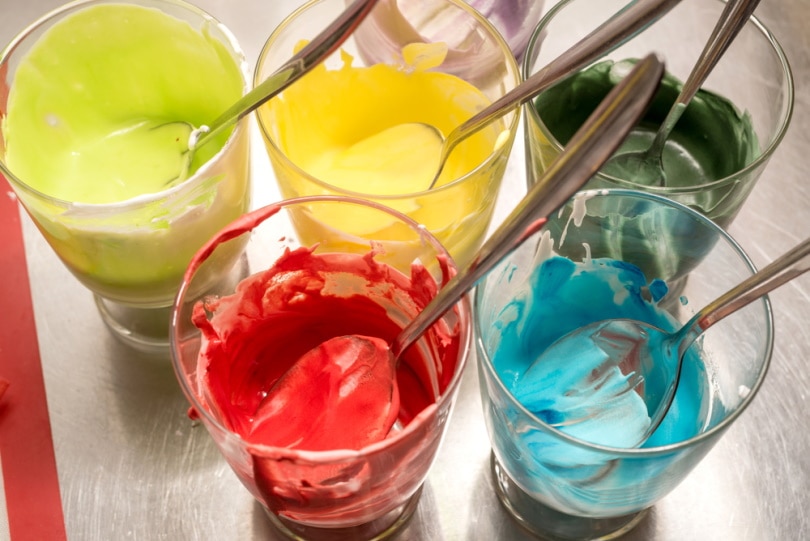
Most food is processed for humans and dogs. Processing alters the natural state of food, removes bacteria, improves its shelf life, and makes it visually appealing. It changes the color of the product, and most of what we eat would be gray (and unappetizing!) without food coloring.
But is food coloring safe for dogs? What’s in it? The colors are added for our benefit and don’t provide nutritional benefits for dogs.
Although food coloring is generally safe for dogs to eat, you may prefer to avoid it.
What’s in Food Coloring?
Artificial food colorings were initially made from coal tar. Now, synthetic food dyes are derived from petroleum1 or crude oil. The final products are tested to ensure they contain no traces of petroleum.
Some food coloring is made from plant-based materials, such as Blue No. 2, the same indigo dye used to color denim. Other natural sources of pigment include turmeric, a plant that grows in India, and cochineal, an extract from an insect that creates a red color.
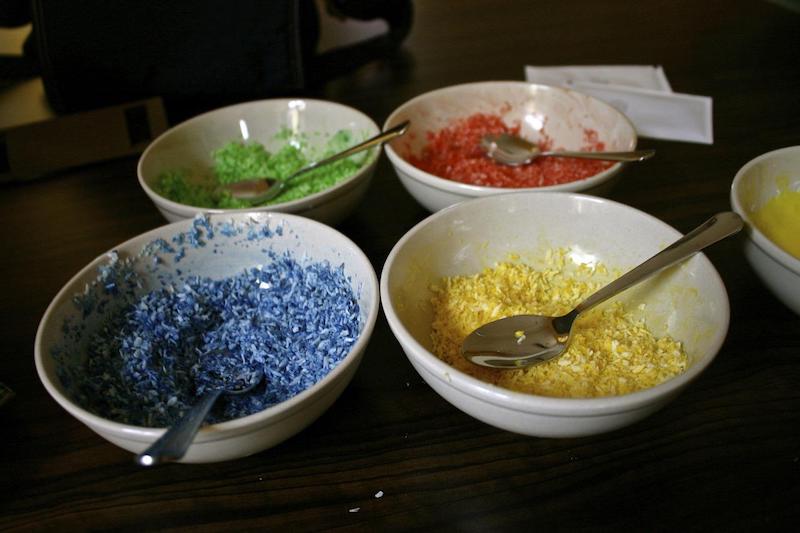
Is Food Coloring Safe?
Food coloring has a sordid history in our food industry. Companies weren’t always honest and transparent and used food coloring to hide spoilage or discoloration in older food. Some of the colors also contained hazardous materials like lead and arsenic, compounding the issue.
Then, the Food and Drugs Act of 1906 banned toxic food coloring. The approved food coloring came from coal tar dye. In the 1950s, it was also banned, leading to the Color Additives Amendments of 1960, which enacted strict oversight for color additives in human and animal foods.
Now, the Food and Drug Administration (FDA) strictly regulates all color additives used in food. The certified colors include fewer than 10 approved colors, and colors derived from natural pigments in plants, minerals, and animals are allowed. The FDA also regulates the amount of food coloring allowed and its disclosure on the packaging.
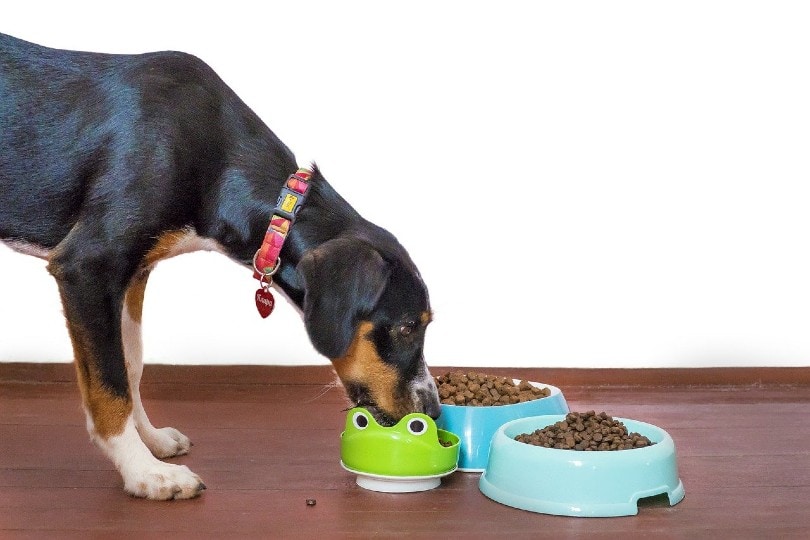
Are Food Colorings in Dog Food? Are They Safe?
According to the FDA, approved colors are safe when used as directed in human and pet foods. Some food colorings are hazardous in large quantities but don’t include FDA-approved colors and must be used in much higher quantities.
The Association of American Feed Control Officials (AAFCO) allows color additives in pet food as defined in the Federal Food, Drug, and Cosmetic Act:
- Any dye, pigment, or substance that, when added or applied to a food, drug, or cosmetic, or to the human body, is capable of imparting color
- Includes substances that, when fed to animals, impart color to meat, milk, or eggs
- Includes chemical and food-like substances
All certified color additives for pet food are “artificial” by definition and are FDA-approved colors. Colors exempt from certification are derived from natural sources, such as plants, minerals, algae, or animals. The colors must also be labeled and listed.
In short, according to the FDA and AAFCO, color additives are safe for dog food. The limited research in this area finds that dogs are more likely to have allergies to protein, not food coloring. Still, it is not an area that’s been extensively researched.
Can I Dye My Dog with Food Coloring?
Some owners may want to know if they can dye their dog’s hair. Human food coloring is generally safe, but human dyes, such as hair dye or colored hairspray, should be avoided. Dyeing their hair is unnecessary and can cause skin irritation, so it is not recommended.
If you decide to dye your dog’s fur, avoid putting food coloring on any areas with open wounds or sores, and keep the food coloring away from sensitive areas like the eyes, nose, or inside the ears.
Another thing to keep in mind is that food coloring stains easily. Even if you can “set” the food coloring with a hairdryer, it could still rub off on your furniture or clothing.

Final Thoughts
Overall, food coloring is safe for dogs in food and topically. Many dog foods contain both FDA-approved artificial and natural color additives, and the limited research in this area presumes they are safe for human and pet consumption. Ultimately, the choice to use food coloring for your dogs is yours.
- You also like: Is Food Coloring Safe for Cats? Facts & FAQ
Featured Image Credit: Yakov Oskanov, Shutterstock
